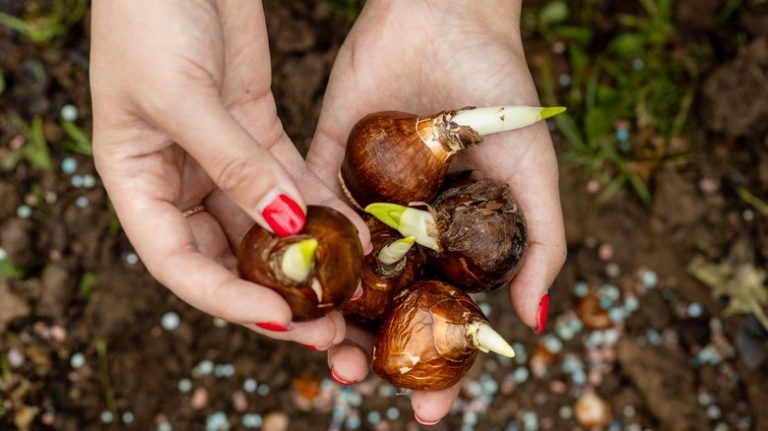Gerbera daisies are bold and beautiful flowers that can add a pop of color to any garden or floral arrangement. With their vibrant blooms and variety of colors, gerberas are a popular choice among gardeners and flower enthusiasts. These herbaceous perennials, also known by their botanical name Gerbera jamesonii, are native to South Africa and thrive in warm, sunny climates.
When it comes to caring for gerbera daisies, there are a few basics to keep in mind. These flowers thrive in full sunlight, so they should be planted in an area that receives at least six to eight hours of direct sunlight each day. They can also tolerate indirect sunlight, but their blooms may not be as vibrant. Gerberas prefer well-draining soil, so be sure to plant them in an area with good drainage or in raised beds. To ensure adequate drainage, consider adding organic matter, such as compost or peat moss, to the soil.
In terms of watering, gerbera daisies prefer moderate moisture levels. They should be watered when the top inch of soil feels dry to the touch. However, it’s important not to overwater these plants, as excessive moisture can lead to root rot. To prevent overwatering, be sure to provide adequate drainage and water in the morning to allow the foliage to dry before evening.
Gerberas are also known for their susceptibility to certain pests, including aphids, whiteflies, and leaf miners. These insects can cause damage to the leaves and flowers of the plants. To protect your gerbera daisies from pests, consider using insecticidal soap or neem oil. Additionally, pruning any dead or wilted foliage can help prevent pest infestations.
Another important aspect of gerbera daisy care is deadheading. Deadheading involves removing the spent flowers from the plant to encourage new growth and prolong blooming. This process can be done by cutting the stalk just above the crown of the plant. Deadheading also helps maintain a neat and tidy appearance.
Gerbera daisies come in a variety of colors, including pinks, reds, oranges, yellows, and whites. They can also have different forms, including single, double, and semi-double blooms. Some varieties even have fringed or lobed petals. The mature size of gerbera daisies can range from 8 to 24 inches in height, depending on the cultivar.
In terms of hardiness, gerberas are considered to be tender perennials in most regions. They are hardy in USDA zones 8 to 11 and may require some protection in colder climates. In areas where temperatures drop below freezing, it is recommended to mulch around the base of the plants to provide added insulation.
In conclusion, gerbera daisy care involves providing adequate sunlight, well-draining soil, and moderate waterings. Deadheading, pruning, and protecting from pests are also important aspects of care. With proper attention, your gerbera daisies will bloom beautifully and add a touch of bold color to your garden or floral arrangements.
Source: “Gerbera Daisy Care – Tips On How To Grow Gerbera Daisies”
Gerbera jamesonii
The Gerbera jamesonii, commonly known as the gerbera daisy, is a popular flowering plant that is native to South Africa. It belongs to the daisy family and is known for its vibrant and colorful blooms.
When growing gerbera daisies, it is important to provide them with well-draining soil, as they prefer a soil that is rich in clay but drains well. This can be achieved by making sure the planting location has adequate drainage and adding organic matter to the soil to improve its drainage qualities.
Gerbera daisies require a sunny location to thrive, as they need at least six hours of direct sunlight each day. Morning sunlight is preferable, as it helps to dry the foliage and reduce the risk of diseases such as powdery mildew.
Watering is crucial to the health of gerbera daisies. They require regular waterings to keep the soil moist, but not waterlogged. Watering in the morning is recommended, as it allows the foliage to dry before evening, reducing the risk of diseases. Avoid wetting the crown of the plant, as this can lead to rot.
Fertilizing gerbera daisies is important to promote healthy plant growth and blooming. Use a balanced fertilizer with a higher phosphorus value, as this will encourage flower production. Fertilize the plants every two to four weeks during the growing season.
Deadheading, or removing spent flowers, encourages the gerbera daisies to produce more blooms. Simply pinch or cut off the faded blooms, making sure to remove the entire flower head down to the base of the stem.
Gerbera daisies can be prone to a few pests, including aphids, thrips, and spider mites. Regularly inspect the plants for any signs of pests and take appropriate measures to control them.
Gerbera jamesonii is available in a variety of colors, sizes, and types, including single, semi-double, and double flower forms. Common colors include red, pink, orange, yellow, and white. They can be used as cut flowers in arrangements or as a colorful addition to the garden.
Propagation of gerbera daisies can be done through division or from seeds. Dividing mature plants every few years helps to rejuvenate them and ensure healthy growth. Seeds can be sown in well-draining soil and kept moist until they germinate.
Gerbera daisies are not very hardy and can be sensitive to cold temperatures. They are often treated as annuals in colder climates or grown as container plants that can be brought indoors for winter protection.
Overall, with proper care and maintenance, gerbera daisies can reward gardeners with long-lasting and vibrant floral displays. Whether grown in the garden or used as cut flowers, they are sure to bring joy and beauty to any space.
Gerbera Daisy Care – Tips On How To Grow Gerbera Daisies
Gerbera daisies, also known by their scientific name Gerbera jamesonii, are a popular choice for adding color and beauty to gardens. These showy perennials are known for their large and vibrant blooms, which come in a variety of colors and sizes. If you’re thinking of growing gerbera daisies, here are some tips on how to care for them:
Location and Exposure
Gerbera daisies thrive in a sunny location with partial shade. They prefer a minimum of 6 hours of sunlight each day to produce the best blooms. When choosing a planting spot, make sure it has well-draining soil and is protected from strong winds.
Soil and Watering
Gerbera daisies require moist, but not waterlogged, soil. They prefer a soil pH of 6.0-6.5. Water the plants deeply, allowing the top inch of soil to dry out between waterings. Be careful not to overwater, as this can lead to root rot.
Fertilizing
Gerbera daisies benefit from regular fertilization to promote healthy growth and blooming. Use a balanced, water-soluble fertilizer with a formulation of 20-20-20. Apply the fertilizer according to the package instructions, usually every 2-3 weeks during the growing season.
Pest and Disease Control
Gerbera daisies can be prone to pests such as aphids, spider mites, and thrips. Regularly inspect your plants for any signs of infestation and treat them with a suitable insecticide if necessary. In terms of diseases, gerbera daisies can be affected by powdery mildew, leaf spot, and botrytis blight. Proper sanitation and good air circulation can help prevent these diseases.
Deadheading and Harvesting
To keep your gerbera daisies blooming for a long time, it’s important to deadhead the faded blooms. This involves removing the spent flowers along with their stems. Deadheading can be done by simply pinching off the flowers or cutting them with clean garden shears. You can also harvest the flowers for indoor arrangements, taking care to cut the stems just above a healthy leaf.
Overwintering and Zones
In colder climates, gerbera daisies are often grown as annuals or brought indoors for the winter. If you want to overwinter them, dig up the plants before the first frost, remove any dead foliage, and store them in a cool, dark location. Gerbera daisies are hardy in USDA hardiness zones 8-11, although some varieties can tolerate zone 7 with protection.
By following these care tips, you can enjoy the beauty of gerbera daisies in your garden. Whether you plant them in flower beds or containers, these showy flowers will bring color and cheer to your outdoor space.
How to Grow Gerbera Daisies
Gerbera daisies, also commonly known as Gerbera Jamesonii, are vibrant and bold flowers that can brighten up any garden. They are members of the daisy family and are native to South Africa. With their crested centers and wide range of colors, they are excellent plants for adding a pop of color and contrast to your garden.
If you’re ready to start growing Gerbera daisies, here are some tips to help you get started:
Choosing the Right Location
Gerbera daisies thrive in full sun, so choose a sunny spot in your garden for optimal growth. They can also tolerate partial shade, but they may not produce as many flowers. The soil should be well-draining and rich in organic matter. Make sure the area you choose has adequate airflow to help prevent the formation of diseases.
Preparing the Soil
Before planting your Gerbera daisies, prepare the soil by removing any weeds or grass. Ensure that the soil is loose and well-draining, as Gerbera daisies prefer to have their roots in soil that doesn’t hold excess moisture. You can amend the soil with organic matter such as compost or aged manure to improve its texture and fertility.
Planting Gerbera Daisies
When planting Gerbera daisies, dig a hole that is twice the size of the plant’s root ball. Place the plant in the hole and backfill with soil, gently firming it around the roots. Be careful not to cover the crown of the plant, as this can cause rotting. Water the newly planted daisies thoroughly.
Watering and Feeding
Gerbera daisies require regular watering, especially during the growing season. Water them deeply and keep the soil consistently moist, but not waterlogged. Avoid overwatering, as this can lead to root rot. To encourage healthy growth, feed your Gerbera daisies with a balanced, water-soluble fertilizer every three to four weeks during the growing season.
Deadheading and Overwintering
To keep your Gerbera daisies blooming for a longer period, deadhead the faded flowers regularly. This will encourage the plant to produce more blooms. In colder climates, Gerbera daisies are not frost-tolerant and should be protected from freezing temperatures. Cover the plants with a layer of mulch to help insulate them during the winter.
Gerbera daisies are commonly grown from seed, making them a popular choice for avid gardeners. To germinate the seeds, sow them on the surface of a well-draining seed-starting mix. Keep the soil moist and place the seed tray in a warm and bright location, but out of direct sunlight. The seeds typically germinate within two to three weeks.
As your Gerbera daisies grow and mature, be sure to provide adequate space between the plants to allow for good airflow. This will help prevent diseases and keep your plants healthy. Keep an eye out for common insect pests like aphids and thrips, and take appropriate measures to control them if needed.
With these tips and proper care, your Gerbera daisies will soon bring gorgeous blooms to your garden. Enjoy their vibrant colors and beautiful flowers!



